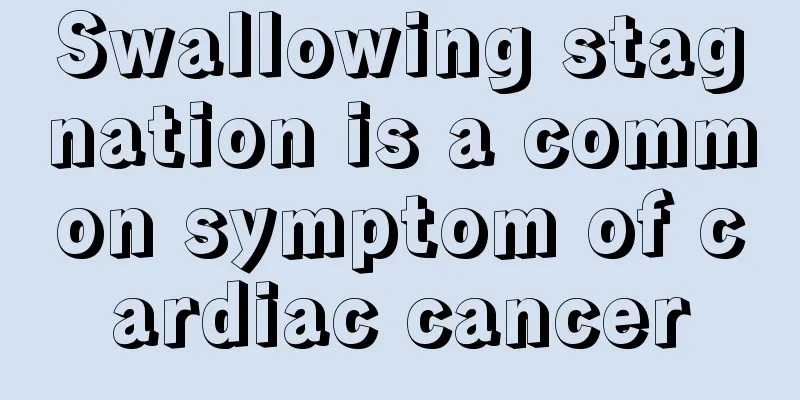Interventional surgery for cerebral artery aneurysm

|
The brain is a very important part of the human body. The coordinated operation of various body structures in people's daily lives is a result of the control of brain nerves. This important part is prone to problems, such as cerebral aneurysm, which requires cerebral aneurysm interventional surgery. This is a commonly used method for treating cerebral vascular diseases. It is relatively clear to some people who are familiar with this condition, but for some people who have never known about it, they are more worried about what kind of situation will occur during interventional surgery for cerebral artery aneurysm. Below are specific instructions for interventional surgery for cerebral aneurysm. How do brain aneurysms form? We all know that there are many arteries on the surface and deep in the brain. These arteries come from the various levels of branches of the internal carotid artery and the vertebral basilar artery, and are distributed in the brain in a winding manner, just like the roots of a big tree intertwined in the soil. Tumor-like protrusions will appear at the roots of trees, and bulges will also appear at the weak points of the walls of the cerebral arteries. These are cerebral aneurysms. Some aneurysms are formed congenitally during the embryonic development of the cerebral blood vessels, or there are congenital developmental defects in the cerebral artery walls (especially at the bifurcation of the cerebral arteries), coupled with the involvement of acquired factors such as hypertension and arteriosclerosis in adulthood, resulting in local aneurysm formation. Some aneurysms are purely acquired, such as arteritis, arteriosclerosis, trauma, etc., which cause damage to the arterial intima, coupled with the continuous impact of blood flow, abnormal bulging of the blood vessel wall or even rupture to form an aneurysm. Once ruptured, the blood in the artery overflows into the subarachnoid space, which is a very serious cerebrovascular event, the term is called subarachnoid hemorrhage. Clinically, patients often complain of severe explosion-like or knife-like headaches, accompanied by projectile vomiting. In severe cases, convulsions, hemiplegia, aphasia, coma and even sudden death may occur. According to statistics, 10-15% of patients die before they even reach the hospital. Because of the dangerous course of ruptured cerebral aneurysm, it is not an exaggeration to describe cerebral aneurysm as a "time bomb" buried in the brain. How is brain aneurysm interventional surgery performed? First, let’s get to know the essential artifact for interventional surgery - the spring coil. This is a platinum metal wire with a soft texture. It comes in multiple specifications such as different diameters, lengths and shapes, and is suitable for brain aneurysms of different shapes and sizes. The spring coil is connected to a metal push rod more than one meter long. The process of interventional surgery is ultimately a process of catheter operation. The conventional approach is as follows: a thick catheter - a guide catheter - is inserted through a puncture in one femoral artery, and the guide catheter is sent through the abdominal aorta and thoracic aorta into the cerebral artery (tumor-bearing artery) of the long aneurysm. Then a microcatheter (a thin catheter with a tip not much thicker than sewing thread) is sent into the tumor-bearing artery through this thick catheter, and the tip of the microcatheter is carefully sent into the aneurysm cavity under the guidance of the microguidewire. The delivery and packing of the spring coil mentioned above are completed through this microcatheter. Some people may ask, isn’t the tumor still there after interventional embolization? In fact, cerebral aneurysm is not a tumor as we usually know it, but just a "bulge" on the blood vessel wall. The purpose of our embolization surgery is not to remove this "bulge", but to fill it so that blood no longer flows into the "bulge". Even during a craniotomy, the "bulge" is not removed, but instead clamped closed with a special clip. Although the aneurysm is still there after the operation, it will not rupture and bleed as long as it is isolated from the blood circulation. |
<<: Can lemon water be used as a facial mask?
>>: Is pituitary tumor hereditary?
Recommend
What to eat to prevent bone cancer
What to eat to prevent bone cancer? Preventing bo...
How is the effect of slimming plum
Today's women try all kinds of tricks to lose...
What to do if joint fluid is insufficient
Synovial fluid is a liquid secreted by the human ...
The method of stewing chicken with Panax notoginseng root actually has such medicinal value
It is not uncommon to see chicken stewed with Pan...
Can I drink alcohol if I have keratitis
Keratitis is a general term for inflammation of t...
What is the reason why honey turns white?
Honey brings many benefits to the human body, so ...
What tests should be done for gastric bleeding?
Gastric bleeding is not uncommon in life, and thi...
How long can you live with mid-term lung cancer symptoms? The four most effective treatments for lung cancer
We all know that lung cancer is not easy to detec...
Are there any signs of a rib tumor?
Physical health is very important, but diseases a...
Can applying ginger help grow hair?
Ginger is one of the most common condiments in li...
What to do if tooth joints hurt when opening mouth
"Toothache is not a disease, but it is reall...
What are the treatments for lung cancer in the elderly? How to prevent lung cancer?
With the improvement of living standards, many pe...
What is the cause of polyneuritis?
The occurrence of multiple peripheral neuritis ma...
Is prostate cancer hereditary?
Prostate cancer may have a certain genetic tenden...
What to do if your baby is constipated right after giving birth
Many women will have some problems, big or small,...









